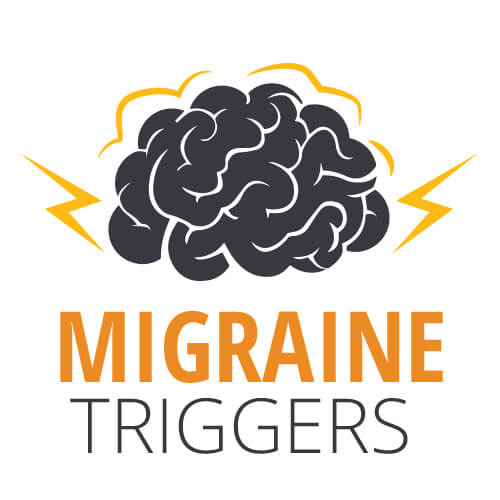
Happy Mind, Happy Life
Happy Mind, Happy Life: 10 Simple Ways to Feel Great Every Day. A science-backed guide to a calmer, happier you.

Health
The cause behind the pain: What are the key migraine triggers and how to treat it

Headaches are an extremely common problem with over 90% of the population estimated to suffer from headaches in any given year. The most common forms that I see in my practice are migraines and tension headaches, as well as a rare condition called cluster headaches, or suicide headaches.
There can be many different causes of headaches, including brain tumours and eye strain. Once you have ruled out a serious cause with your doctor, it is worth taking a look at the CAUSE of the problem.
Let’s talk migraines for example. The World Health Organisation regards migraine as one of its top 20 disabling condition for women aged 15-44. Migraine costs the UK economy around 3 billion pounds each year and over 100,000 people are absent from work and school every single day because of it.
Most of conventional medical care revolves around making the correct diagnosis. Once we have diagnosed you with “migraine” our focus moves towards treatment. You may be told about some known migraine triggers like red wine, cheese and chocolate, but in most cases, you will be prescribed a migraine pill. This is all well and good for SYMPTOM CONTROL, but this will not eliminate the root cause of the problem.
I am not against the use of medications to suppress the symptoms of migraine in the short-term, as long as we then try and figure out what the underlying problem is. You could have five different patients with migraines who have five different triggers. Unfortunately, once you have been “diagnosed”, we tend to treat them the same by suppressing the pain with drugs – in fact, many of the drugs that we use can actually cause headaches themselves – we cause this phenomenon “medication overuse headache”.
In my 15 years of clinical practice, I have found that it can often be possible to eliminate or improve migraines by identifying the root cause.
Here are some of the most common triggers that I see time and time again.
FOOD
The first thing I do is put my patients on a 21-day elimination diet. The purpose of this is to remove from my patient’s diet common food triggers. Once complete, one new food is re-introduced in a controlled manner every three days whilst keeping the rest of the diet the same.
It can often be very obvious which foods are triggering migraines with the most common being gluten, dairy and eggs. For many cases, an elimination diet by itself can be enough to determine the cause of the migraines.
Other common food triggers are shellfish, soy, and peanuts. Plus, certain chemicals in the diet like Monosodium Glutamate (MSG) and sulphites found in red wine and dried fruit can be the cause.
If you understand that a certain food is causing your migraines, you then can make an informed choice. Do you eat it now and again and accept the consequences, or do you feel motivated enough to cut it out?
STRUCTURAL ISSUES
This is a very much overlooked cause of migraines. A previous head injury, accident or fall may be a contributing factor to your migraines. Even postural changes in your body resulting from a sedentary lifestyle can be a factor. Often the actual event may have occurred many years ago and neither the patient nor the doctor have linked it to the migraine. Whatever the cause, it can be worth seeing a musculoskeletal expert – a movement therapist, physiotherapist, osteopath etc. – to examine you further.
FLUIDS
Often mild dehydration can be a contributing factor to migraines. Keep hydrated during the day and, as a rule of thumb, try and aim for at least eight glasses of water per day. It will become very obvious within a day or two if this has an impact on your headaches. I have seen a few cases where this intervention alone has yielded a dramatic improvement in symptoms.
MAGNESIUM
Many people who suffer from migraines may have sub-optimal magnesium levels. It is well established that much of the population have insufficient intake of magnesium rich foods. Magnesium plays a key role in the body’s functioning and is involved in over 300 enzymatic reactions. It is an important mineral for generating energy, helping various chemical pumps in the body work and helping muscles to relax.
Although it’s one of the most abundant minerals available, many of us have sub-optimal levels. Other symptoms may include constipation, anxiety, irritability, muscle aches and twitching.
The best way to increase your magnesium intake is to eat foods rich in magnesium like beans, dark leafy vegetables, wild caught salmon, avocados and bananas. Alternatively, you could try a high-quality supplement.
CO-ENZYME Q-10
Brain energy metabolism has been found to be abnormal in many types of migraines, making the migrainous brain hyper-responsive to many stimuli. One of the patterns identified is the altered capability of the body’s mitochondria to achieve appropriate control over certain by-products known as “reactive oxygen species”. These in turn can alter the function of blood vessels in the brain which may trigger head pain.
CoQ10 is a very safe supplement that can help reduce these by-products, and in a number of early research trials, has shown some success in reducing migraine related pain and frequency. Although not standard practice, a growing number of neurologists in the UK are now using CoQ10 supplements to try and help their patients’ migraines.
HORMONAL IMBALANCES
Premenstrual symptoms as well as peri-menopause can be the root cause of migraines. Many things can contribute to this hormonal imbalance including a lack of sleep, stress, or too much flour and sugar. I recommend eating whole foods, eliminating caffeine and sugar from your diet for a short period of time and adding more exercise and stress-reducing techniques to your routine like meditation and yoga.
Remember that not all migraines are identical and can be triggered by different things in different people. Sometimes it can be relatively simple to identify the root cause but often, one needs to change multiple things at once – many people have a combination of triggers that are resulting in their migraine.
All of the changes that I recommend above have very little, if any, risk of harm. If you are suffering from migraines, why not try the following to see if they help.
MY TOP TIPS ARE TO:
- Try a 21-day elimination diet where you cut out common known food triggers such as gluten, dairy, eggs, shellfish and peanuts. Certain chemicals in the diet like Monosodium Glutamate (MSG), a food additive, and sulphites found in red wine and some dried fruit can often be a contributing factor. It may be advisable to consult your doctor, a nutritional therapist or a dietician to help you with this process.
- Increase your intake of magnesium rich foods. Good sources include dark leafy vegetables, wild salmon, nuts, seeds, avocados and bananas. It may also be worth taking a good quality magnesium supplement. Remember that some food sources of magnesium can also cause a food sensitivity such as dried fruit (which can contain sulphites).
- Try taking a CoQ10 supplement.
- See a musculoskeletal expert for any structural issues in your neck, back or shoulders.
- Stay hydrated and drink more water.
- Relax. Engage in stress-reduction techniques such as meditation, yoga or light exercise.
Suffer from migraines? Please share your story with me on Facebook or Twitter.
— Dr Chatterjee
para
DISCLAIMER: The content in this blog is not intended to constitute or be a substitute for professional medical advice, diagnosis, or treatment. Always seek the advice of your doctor or other qualified health care provider with any questions you may have regarding a medical condition. Never disregard professional medical advice or delay in seeking it because of something you have read in this blog or on this website.
 Dr. Rangan Chatterjee
MbChB, BSc (Hons), MRCP, MRCGP
Dr. Rangan Chatterjee
MbChB, BSc (Hons), MRCP, MRCGP